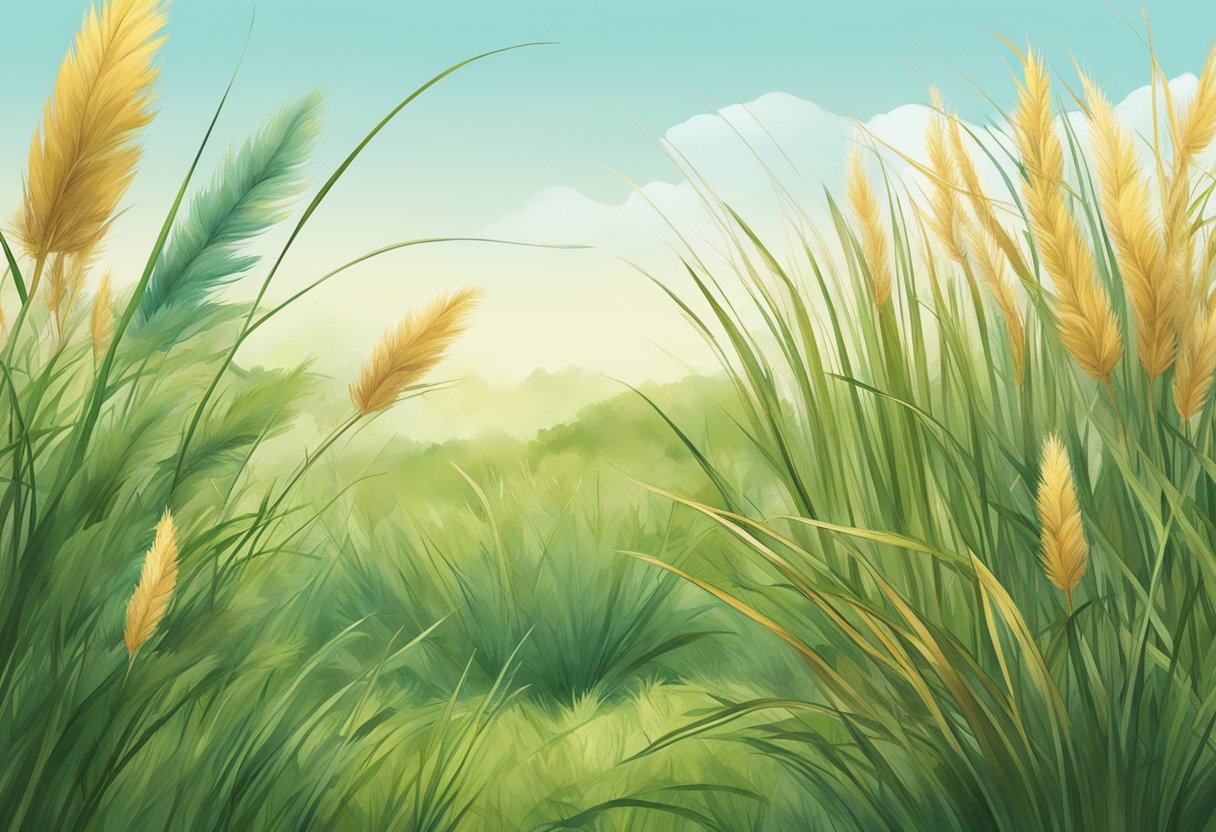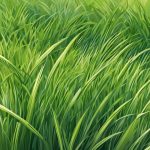Types Of Grasses
Grasses are an essential part of the natural landscape and play a vital role in soil conservation, erosion control, and water filtration. They are also a popular choice for lawns and sports fields because of their aesthetic appeal and durability. However, not all grasses are created equal, and different types of grasses have different characteristics and requirements.
Understanding the types of grasses and their characteristics is crucial for proper lawn maintenance and care. Some grasses are more drought-tolerant, while others prefer moist soil. Some grow well in full sun, while others thrive in partial shade. Knowing which grasses are best suited for your lawn can save you time, money, and frustration in the long run.
Selecting the right grass for your lawn can be a daunting task, but with the right information, it can be a straightforward process. Factors such as climate, soil type, and lawn usage should be considered when choosing the best grass for your lawn. In this article, we will explore the different types of grasses, their characteristics, and how to select the right grass for your lawn.
Key Takeaways
- Understanding the characteristics of different types of grasses is crucial for proper lawn maintenance and care.
- Selecting the right grass for your lawn depends on factors such as climate, soil type, and lawn usage.
- With the right information, choosing the best grass for your lawn can be a straightforward process.
Types of Grasses and Their Characteristics

Grasses can be broadly classified into three categories based on their growth patterns and climate adaptability – Cool-Season Grasses, Warm-Season Grasses, and Transitional Zone Grasses. Each type has its own unique characteristics, which make them suitable for specific applications.
Cool-Season Grasses
Cool-season grasses are best suited for regions that experience cold winters and mild summers. They grow actively in the spring and fall when temperatures are cooler, and often go dormant during the hot summer months. Some of the most popular cool-season grasses include fine fescue, tall fescue, Kentucky bluegrass, and perennial rye.
Cool-season grasses have a fine texture and are highly disease-resistant. They are suitable for lawns, golf courses, and parks in regions with a cool climate. They require regular watering and fertilization to maintain their lush green appearance.
Warm-Season Grasses
Warm-season grasses are adapted to regions with hot summers and mild winters. They grow actively during the summer months and go dormant in the winter. Some of the most popular warm-season grasses include Zoysia, St. Augustine, Bermuda grass, and Buffalo grass.
Warm-season grasses have a coarse texture and are highly drought-resistant. They are suitable for lawns, sports fields, and parks in regions with a warm climate. They require less watering and fertilization compared to cool-season grasses.
Transitional Zone Grasses
Transitional zone grasses are suitable for regions that experience a mix of warm and cold weather throughout the year. They have a moderate growth pattern and can tolerate a wide range of temperatures. Some of the most popular transitional zone grasses include Kentucky bluegrass, tall fescue, and perennial rye.
Transitional zone grasses have a medium texture and are moderately disease-resistant. They are suitable for lawns, golf courses, and parks in regions with a moderate climate. They require regular watering and fertilization to maintain their appearance.
In conclusion, understanding the characteristics of different types of grasses is essential for choosing the right grass for your lawn, sports field, or park. By considering factors such as texture, disease resistance, and climate adaptability, you can select a grass that will thrive in your region and meet your specific needs.
Grass Maintenance and Care
Maintaining and caring for your grass is essential to ensure that it remains healthy and beautiful. Proper maintenance practices can help improve the drought tolerance of your grass, increase its resistance to heavy foot traffic, and prevent diseases and pests. Here are some tips on how to maintain and care for your grass.
Mowing and Trimming
Mowing and trimming are essential parts of grass maintenance. You should mow your grass regularly to keep it at the right height. Different types of grass have different height requirements, so make sure you know the recommended height for your grass. You should also avoid cutting more than one-third of the grass blade length at a time, as this can damage the grass.
Trimming is also important to maintain the edges of your lawn. You can use a string trimmer or edger to trim the edges of your lawn. Make sure you trim the edges regularly to prevent them from becoming overgrown.
Watering and Irrigation
Watering your grass is essential to keep it healthy and green. Different types of grass have different watering requirements, so make sure you know the recommended watering schedule for your grass. You should also water your grass deeply and infrequently, as this can help improve its drought tolerance.
Irrigation systems can also be used to water your grass. You can install a sprinkler system or a drip irrigation system to water your grass. Make sure you use an irrigation system that is appropriate for your grass type and climate.
Fertilizing and Soil Health
Fertilizing your grass is essential to provide it with the nutrients it needs to grow and remain healthy. You should fertilize your grass regularly, as recommended by your grass type and climate. You can use organic or synthetic fertilizers, depending on your preference.
Soil health is also important to maintain the health of your grass. You should test your soil regularly to ensure that it has the right pH level and nutrient content. You can also use soil amendments to improve soil health and promote healthy grass growth.
Overall, proper maintenance and care can help ensure that your grass remains healthy and beautiful. By following these tips, you can improve the drought tolerance of your grass, increase its resistance to heavy foot traffic, and prevent diseases and pests.
Selecting the Right Grass for Your Lawn
When it comes to selecting the right grass for your lawn, there are a few factors to consider. The two main factors are climate zone and lawn usage. Here are some tips to help you choose the right grass for your lawn.
By Climate Zone
The USDA Plant Hardiness Zone Map is a useful tool to help you determine which grasses are best suited for your climate zone. The map divides the United States into 13 zones based on average minimum winter temperatures. Each zone is separated by 10 degrees Fahrenheit.
For example, if you live in Zone 5, which has an average minimum winter temperature of -20 to -10 degrees Fahrenheit, you will want to choose a grass that is hardy and can withstand cold temperatures. Some cool-season grasses that are suitable for Zone 5 include Kentucky bluegrass, fescue, and ryegrass.
By Lawn Usage
Another important factor to consider when choosing the right grass for your lawn is lawn usage. If you have a lot of foot traffic on your lawn, you will want to choose a grass that has good traffic tolerance. Some grasses that are known for their traffic tolerance include Bermuda grass, zoysia grass, and buffalo grass.
If your lawn is shaded, you will want to choose a grass that has good shade tolerance. Some grasses that are known for their shade tolerance include fine fescue, St. Augustine grass, and zoysia grass.
In addition to considering climate zone and lawn usage, you will also want to consider factors such as drought resistance, grass type, and whether to use seed or sod. By taking these factors into consideration, you can select the right grass for your lawn and enjoy a beautiful and healthy lawn year-round.
Common Grass Species and Varieties
When it comes to choosing a grass variety for a lawn, homeowners have a wide range of options. Here are some of the most common grass species and varieties to consider:
Fescues
Fescues are a group of cool-season grasses that can be used for lawns, golf courses, and other landscaping purposes. They are known for their fine texture and shade tolerance, making them a popular choice for lawns in northern regions. Some common fescue varieties include:
- Tall fescue: A durable grass that can withstand heavy foot traffic and drought conditions.
- Fine fescue: A group of grasses that includes creeping red fescue, chewings fescue, and hard fescue. These grasses are well-suited for shaded areas and low-maintenance lawns.
Ryegrasses
Ryegrasses are also cool-season grasses that are commonly used for lawns and sports fields. They have a fine texture and are known for their rapid germination and establishment. Some common ryegrass varieties include:
- Perennial ryegrass: A popular choice for overseeding warm-season lawns in the fall. It has a fine texture and can tolerate heavy foot traffic.
- Annual ryegrass: A fast-growing grass that is often used as a temporary cover crop or for erosion control.
Bermudagrass and Zoysiagrass
Bermudagrass and zoysiagrass are warm-season grasses that are well-suited for southern regions. They are known for their durability and ability to withstand heat and drought conditions. Some common varieties include:
- Bermuda grass: A low-maintenance grass that is often used for sports fields and golf courses. It has a fine texture and can tolerate heavy foot traffic.
- Zoysia grass: A slow-growing grass that is well-suited for low-maintenance lawns. It has a medium texture and can tolerate some shade.
Overall, choosing the right grass variety depends on a variety of factors, including climate, soil type, and intended use. By considering these factors and consulting with a lawn care professional, homeowners can select a grass variety that will thrive in their specific environment.
Grass Seed and Sod Installation
When it comes to installing a new lawn, there are two main options: grass seed and sod. Both have their advantages and disadvantages, and the choice ultimately depends on the specific needs and preferences of the homeowner.
Grass Seed
Grass seed is a popular choice for those who are looking for a more affordable option. It is also a good choice for those who want to have more control over the type of grass that is planted. There are many different types of grass seed available, each with its own unique characteristics and benefits.
To germinate, grass seed requires proper soil preparation, consistent watering, and adequate sunlight. It can take several weeks for the grass to become established, and it may take several months for it to reach maturity. However, once the grass is established, it can be very dense and uniform, and requires relatively low maintenance.
Sod
Sod is a popular choice for those who want an instant lawn. It is also a good choice for those who want a more uniform and dense lawn. Sod is made up of grass that has already been grown and harvested, and is typically sold in rolls or squares.
Sod installation requires proper soil preparation, including leveling and tilling the soil. The sod is then laid out and trimmed to fit the specific area. Once installed, the sod requires consistent watering and care to ensure that it takes root and becomes established. Sod can be more expensive than grass seed, but it provides an instant and finished look to your lawn.
Both grass seed and sod have their advantages and disadvantages, and the choice ultimately depends on the homeowner’s specific needs and preferences. However, it is important to properly prepare the soil and provide consistent care to ensure that the grass becomes established and healthy, whether using grass seed or sod.






